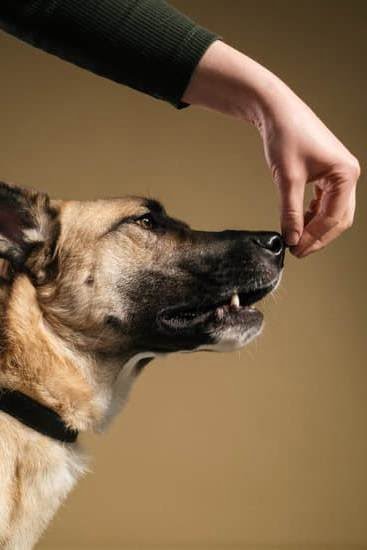What treats do people use to train dogs? Treats play a crucial role in dog training, serving as a powerful motivator for behavior reinforcement. From store-bought goodies to homemade delights, there are various types of treats that can be used. High-value treats, like meat or cheese, often work best for challenging tasks, while low-value treats, such as dry kibble, can be used for simpler commands.
When it comes to choosing the right treats for your furry friend, it’s essential to consider factors such as breed and size. Different breeds may have different preferences or dietary restrictions, so selecting the appropriate treat is key to effective training. Professional dog trainers often recommend specific treats based on their experience with various breeds and training methods.
To make the most out of training sessions, it’s important to follow some dos and don’ts when using treats. Timing is crucial – reward good behavior immediately to reinforce it effectively. In addition to traditional treats, there are creative options beyond the basics that can add variety and engagement to training sessions. For dogs with dietary restrictions, healthy treat alternatives are available to ensure they can still enjoy rewards during training.
Types of Treats for Training
When it comes to training man’s best friend, treats are often used as a powerful tool to reinforce positive behaviors. From basic obedience commands to more advanced tricks, treats play a crucial role in motivating and rewarding dogs during training sessions. However, with the vast array of options available on the market today, pet owners may wonder: what treats do people use to train dogs?
One popular option for training treats is store-bought dog treats. These come in various flavors, shapes, and sizes, making them suitable for different breeds and preferences. Additionally, store-bought treats are convenient and easy to use during training sessions. Some popular brands include Blue Buffalo, Wellness Natural Pet Food, and Zuke’s Mini Naturals.
While store-bought treats are convenient, some pet owners prefer homemade treats for their furry friends. Homemade treats allow owners to control the ingredients and ensure that their pets are consuming healthy snacks without added preservatives or fillers. Common ingredients used in homemade dog treats include peanut butter, pumpkin, sweet potato, and oats. Here are some examples of homemade treat ideas that you can try:
- Peanut Butter Banana Bites: Mash ripe bananas with peanut butter, spread on a baking sheet, cut into small pieces after baking.
- Pumpkin Oatmeal Bars: Mix canned pumpkin puree with oats and bake until firm; cut into squares.
- Sweet Potato Chews: Slice sweet potatoes thinly, bake until crispy.
Whether you opt for store-bought or homemade treats for your dog’s training sessions ultimately depends on your preferences and your pet’s dietary needs. Experiment with different types of treats to see which ones your dog responds to best during training.
Remember to consider your dog’s size, breed, and any dietary restrictions when choosing the right treats for successful training sessions. By finding the perfect treat that motivates your furry friend, you can enhance the effectiveness of your training efforts and strengthen the bond between you and your canine companion.
High-Value Treats vs Low-Value Treats
When it comes to training dogs, using treats as rewards can be highly effective in reinforcing positive behavior. However, not all treats are created equal.
In dog training, there is a distinction between high-value treats and low-value treats, each serving a different purpose in the training process. High-value treats are considered more desirable by the dog and are typically reserved for teaching new behaviors or commands, while low-value treats are used for maintaining known behaviors or commands.
High-value treats are what most people think of when considering what treats to use to train dogs effectively. These treats are usually ones that your dog finds extremely tasty and rewarding, such as small pieces of cooked chicken, cheese, or freeze-dried liver.
The key to high-value treats is that they must be irresistible to your dog and something they don’t get on a daily basis so that they maintain their value as a special reward during training sessions.
On the other hand, low-value treats are less exciting but still enjoyable to your dog. These can include dry kibble or store-bought treat sticks that are used more for practicing known commands rather than introducing new ones.
Using the right mix of high-value and low-value treats in your training sessions can help keep your dog engaged and motivated throughout the process. Remember that finding the perfect balance between these two types of treats will depend on your individual dog’s preferences and what gets them excited to learn.
| Type of Treat | Examples |
|---|---|
| High-Value Treats | Cooked chicken, cheese, freeze-dried liver |
| Low-Value Treats | Dry kibble, store-bought treat sticks |
Choosing the Right Treats for Your Dog
When it comes to training our furry companions, one of the key considerations is choosing the right treats. Different breeds and sizes of dogs have varying preferences and dietary needs, so it’s important to select treats that will be both enticing and appropriate for your specific dog. The question of what treats do people use to train dogs can vary depending on a dog’s individual characteristics.
For small breed dogs, it’s essential to choose treats that are bite-sized and easily chewed. Treats that are too large or hard may pose a choking hazard for smaller dogs. Alternatively, larger breed dogs may require treats that are more substantial in size to make an impact during training sessions. Understanding the physical limitations of different breeds can help you determine the ideal treat size for your dog.
In addition to size considerations, different breeds may have unique taste preferences as well. Some breeds may be more motivated by savory treats such as bits of cooked chicken or cheese, while others may have a sweet tooth for treats like dried fruits or peanut butter. By experimenting with a variety of treat options, you can determine what types of treats are most effective in motivating your dog during training sessions.
Training Treats Dos and Don’ts
Do: Choose Treats Your Dog Finds Irresistible
When it comes to using treats for training, it’s essential to select ones that your dog truly loves. Experiment with different types of treats to see what motivates your furry friend the most. Some popular options include small pieces of cooked chicken, cheese, freeze-dried liver, or commercial dog treats. Knowing
Don’t: Overload on Treats
While treats are a fantastic way to motivate and reward your dog during training, it’s crucial not to overdo it. Too many treats can lead to weight gain and potentially spoil your pup’s appetite for their regular meals. Be mindful of the portion sizes you’re using and consider breaking larger treats into smaller pieces to make them last longer without overfeeding.
Do: Use Treats as Positive Reinforcement
One of the key principles of positive reinforcement training is rewarding desired behaviors with treats. When your dog successfully follows a command or exhibits good behavior, make sure to immediately offer a treat along with praise. This positive association helps strengthen the bond between you and your pet while reinforcing the behavior you want them to repeat. Remember that consistency is key when using
Top Treats Recommended by Professional Dog Trainers
Professional dog trainers often recommend a variety of treats that can be highly effective in training dogs. One popular choice among trainers is small, soft treats that can be easily and quickly consumed by the dog during training sessions.
These treats are usually flavorful to capture the dog’s attention and keep them motivated to follow commands and learn new behaviors. Some common examples of these types of treats include small pieces of cooked chicken, cooked fish, or freeze-dried liver.
Another type of treat that professional dog trainers often recommend is specially formulated training treats that are specifically designed for use in obedience training. These treats are typically low in calories to prevent overfeeding during training sessions, but still tasty enough to keep the dog engaged. Additionally, their small size makes them convenient for frequent rewarding without causing stomach upset or weight gain in the dog.
Some professional dog trainers also suggest using interactive treats such as puzzle toys or treat-dispensing balls during training sessions. These types of treats not only provide a reward for good behavior but also stimulate the dog mentally by encouraging problem-solving skills. By incorporating these interactive treats into training routines, owners can make learning fun and engaging for their dogs while reinforcing positive behaviors effectively.
| Treat Type | Description |
|---|---|
| Small, soft treats | Flavorful and easy to consume during training sessions |
| Specially formulated training treats | Low in calories but still tasty for engagement |
| Interactive treats (puzzle toys, treat-dispensing balls) | Stimulate mental activity while rewarding good behavior |
Creative Treat Ideas for Training
When it comes to training dogs, using treats as positive reinforcement is a common practice among dog owners and trainers alike. While store-bought treats are convenient and readily available, getting creative with treat options can make training sessions more engaging and effective. Mixing things up with unique treats can keep your dog motivated and excited to learn new behaviors.
Here are some creative treat ideas for training that go beyond the basic store-bought biscuits:
- Freeze-dried meats: Freeze-dried meats such as chicken, beef, or fish are high in protein and irresistible to most dogs.
- Fruits and vegetables: Some dogs enjoy fruits like apples or veggies like carrots as a tasty treat alternative.
- Cheese cubes: Cheese is a high-value treat for many dogs and can be used in small amounts during training sessions.
By incorporating different types of treats into your dog’s training routine, you can cater to their specific preferences and keep them engaged throughout the process. Experimenting with various treats allows you to find out what motivates your dog the most and helps make training sessions fun for both you and your furry companion. Remember to always consider your dog’s dietary needs and consult with a veterinarian if you have any concerns about certain ingredients.
Healthy Treat Alternatives
Dietary Restrictions in Dogs
When it comes to training dogs with dietary restrictions, it is important to understand what treats are safe and appropriate for them. Dogs with food allergies, sensitivities, or specific health conditions may require special consideration when selecting training treats. Common ingredients such as grains, dairy, artificial additives, and certain proteins may need to be avoided to prevent adverse reactions in these dogs.
Options for Treats With Dietary Restrictions
For dogs with dietary restrictions, there are still plenty of options available for training treats. Many pet stores now offer a variety of specialized treats that cater to different dietary needs. Look for treats that are grain-free, limited ingredient, or specifically labeled as hypoallergenic. These treats are often made with alternative ingredients such as sweet potatoes, peas, and novel proteins like duck or venison.
Homemade Treats for Dogs With Dietary Restrictions
Another option for owners of dogs with dietary restrictions is to make homemade treats tailored to their specific needs. By using simple recipes and carefully selecting ingredients, you can create tasty training rewards that won’t aggravate your dog’s condition. Ingredients like plain cooked meats (such as chicken or turkey), fruits like apples or blueberries, and vegetables like carrots can be used to make nutritious and safe homemade treats for training sessions.
Conclusion
In conclusion, it is evident that treats play a crucial role in enhancing the success of dog training. Whether you are using store-bought treats, homemade options, high-value rewards, or even healthy alternatives, the key is to find what motivates your furry friend the most. Understanding the difference between high-value and low-value treats can significantly impact the effectiveness of your training sessions, as well as considering the unique preferences and dietary needs of your dog.
Professional dog trainers often recommend a variety of top treats that have proven to be successful in reinforcing positive behavior during training. However, it is essential to remember that each dog is different, so experimenting with different treat options and being creative in your approach can lead to greater success. Beyond just basic treats, there are countless creative ideas you can explore to keep training sessions fun and engaging for both you and your pet.
Ultimately, the bond between a pet parent and their dog is strengthened through positive reinforcement training techniques that involve the use of treats. By incorporating various types of treats into your training routine while following some dos and don’ts guidelines, you can create a rewarding experience for both you and your furry companion.
So next time you wonder “what treats do people use to train dogs,” remember that choosing the right treats tailored to your dog’s preferences and needs can make all the difference in achieving training success.
Frequently Asked Questions
What Treats Do Professional Dog Trainers Use?
Professional dog trainers use a variety of treats to reward and motivate dogs during training sessions. These treats are usually high-value, such as small pieces of cooked meat, cheese, liver, or commercial dog training treats. The key is to find treats that your dog finds irresistible and is willing to work for.
What Food Can I Use as Dog Training Treats?
When it comes to choosing food for dog training treats, it’s important to select options that are healthy and appealing to your furry friend. Many dog owners opt for nutritious choices like boiled chicken, turkey, or beef as training rewards. Other options include cut-up vegetables like carrots or fruits such as blueberries or apple slices.
What Treats Do Dog Handlers Use?
Dog handlers often use a mix of treats to keep their canine partners engaged and motivated during training sessions. These may include commercially available training treats like kibble or freeze-dried meats, as well as homemade options like small pieces of hot dogs or cheese.
The goal is to find what works best for each individual dog based on their preferences and dietary needs.

Welcome to the blog! I am a professional dog trainer and have been working with dogs for many years. In this blog, I will be discussing various topics related to dog training, including tips, tricks, and advice. I hope you find this information helpful and informative. Thanks for reading!





